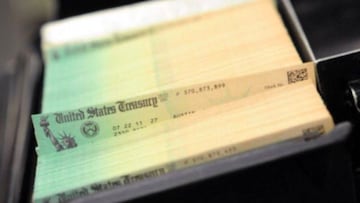Unemployment benefits: How many fraudulent claims were made and how much money was stolen?
Some experts believe as much as half of all unemployment benefits sent during the pandemic have been stolen. How was this widespread fraud possible?


In February 2021, CNN reported on various cases wherein individuals who had not requested unemployment benefits were alerted that their claims had been approved. However, many of these people never saw a dime because hackers had stolen their information, used it to claim benefits, and had them sent to their personal bank accounts. At the time, the Department of Labor estimated that around $60 billion dollars had been stolen using this scheme. Today, some experts believe that number could be four times as high.
This week, Axios has reported that individual criminals and some crime networks may have been able to steal more than $400 billion by hacking the personal data needed to falsify unemployment claims. According to the reporting, these individuals may be backed by foreign governments like China, Nigeria, and Russia.
NEW: Criminals may have stolen as much as half of the unemployment benefits the U.S. has been pumping out over the past year, with the bulk likely ending up in the hands of foreign crime syndicates. https://t.co/ciURI3ijny
— Axios (@axios) June 10, 2021
When the pandemic first began, a top priority of lawmakers was to quickly send money to families who suddenly found themselves out of work. However, many of the systems used by states to claim and distribute benefits lack modern security features, making it easy for bad actors to take advantage of the weaknesses.
Response from the federal government
The White House is outraged by this news and has said that “this type of activity from criminal syndicates is despicable and unacceptable.” To combat the issue going forward, the American Rescue Plan allocated $2 billion for the Department of Justice Anti-Fraud Task Force to modernize unemployment insurance systems and go after criminals who defraud the government in this way.
The need for this money could not come fast enough. On 28 May, the U.S. Department of Labor Office of Inspector General Audit (IGA) released a report detailing how individuals had managed to steal around $39 billion allocated under the CARES Act passed in March 2020. The report highlights that this fraud was able to occur because state systems had not been updated, and the agencies lacked sufficient "to manage the increased number of new claims, and according to state officials, guidance from ETA [Employment and Training Administration] was untimely and unclear.”
Just Released: DOL-OIG Audit Report - COVID-19: States Struggled to Implement Cares Act Unemployment Insurance Programs https://t.co/Hh7eFSuxuS pic.twitter.com/4pVN6yL3ib
— DOL OIG (@DOLOIG) June 2, 2021
Additionally, an in effort to get cash into the hands of workers that had suddenly found themselves without work, “40 percent of states did not perform required cross-matches and 38 percent did not perform required recovery activities.” These cross-checks with other labor and tax systems could have prevented the fraud as many of the individuals whose data was stolen were fully employed throughout the pandemic. Had state unemployment offices verified unemployment status through the databases available, many of these claims could have been rejected and billions in public funds could have been saved.
The reporting by various outlets and the federal government demonstrates the colossal failure to protect public revenue from misuse. Additionally, the IGA report highlights that the objective of skirting oversight responsibilities was done to ensure money was sent to claimants more quickly. However, more than half of states still took an “unreasonable” amount of time in setting up systems to send federal unemployment benefits to “claimants experiencing financial hardships as they struggled to pay bills and satisfy basic needs, such as food and housing.”
- $3600/3000 Child Tax Credit Calculator: how much will I receive per child?
- What states are paying out stimulus check on top of the third federal payment?
- Can a 4th and 5th stimulus check be approved according to the White House?
Preventing this unemployment fraud moving forward
The report provides five recommendations to prevent this sort of fraud. The first and second relate to the completion of an assessment of all state unemployment systems. This evaluation would identify where security features need to be modernized, possible places where they could fail when claim volumes increase, and how to close gaps that allow room for fraud.
Related stories
The third is to support states to better identify instances of overpayment and other red flags that indicate fraud could be occurring. The final proposal suggests that the government "develop standards for providing clear and reasonable timeframes to implement temporary programs,” to ensure that when a crisis hits, individuals and families in need receive their benefits in a timely manner.
While these suggestions will help to prevent misuse and criminal activities moving forward, many believe the damage has already been done. This week marked a major milestone in the pandemic, as, for the first time in over a year, less than 400,000 people claimed unemployment benefits. While this figure is still above pre-pandemic levels, the caseload is more manageable in many states. Further, over half of the states will be ending the additional federal unemployment benefits in the next month, limiting the opportunity for criminals to steal the more generous benefits.
- Unemployment compensation
- Covid-19 economic crisis
- Science
- Tax fraud
- Unemployment
- Coronavirus Covid-19
- Economic crisis
- Tax avoidance
- United States
- Pandemic
- Coronavirus
- Recession
- North America
- Employment
- Economic climate
- Virology
- Outbreak
- Infectious diseases
- Diseases
- Microbiology
- Crimes
- America
- Medicine
- Work
- Economy
- Biology
- Health
- Justice
- Life sciences

